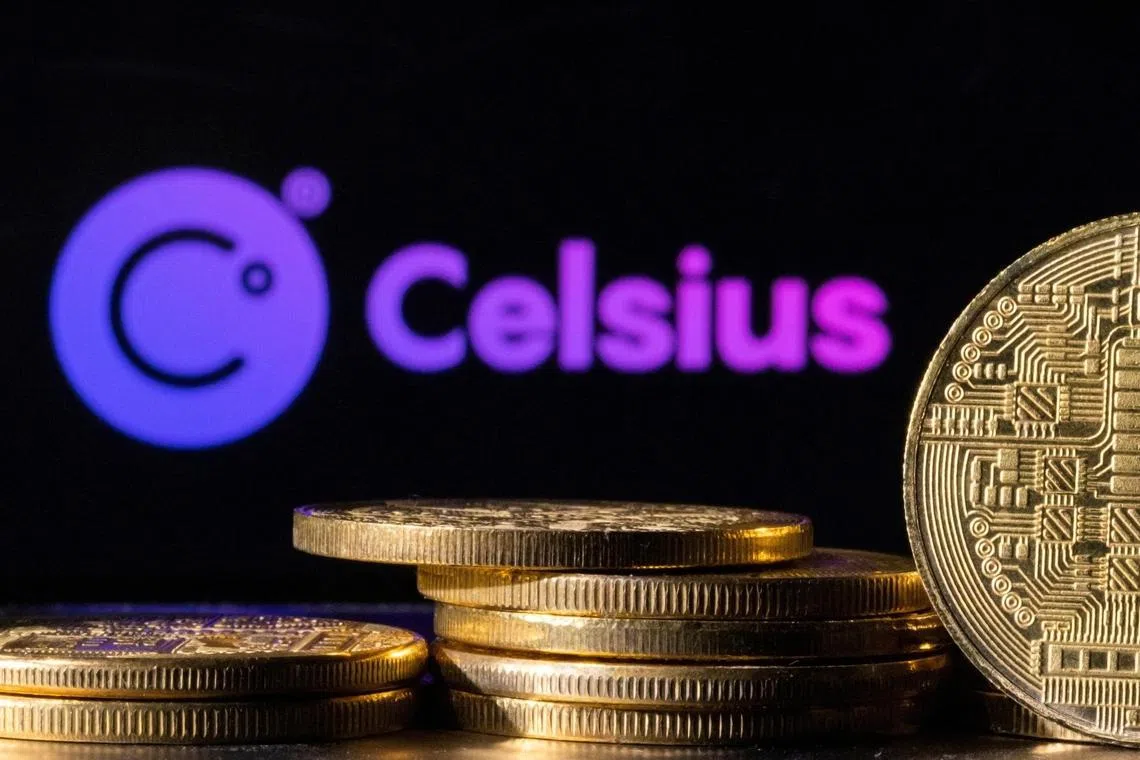Crypto lender Celsius propped up token while two founders cashed out millions: US bankruptcy report
Sign up now: Get ST's newsletters delivered to your inbox

Crypto lender Celsius filed for US bankruptcy in July last year, after freezing customer withdrawals from its platform.
PHOTO: REUTERS
Follow topic:
SINGAPORE/LONDON - Bankrupt crypto lender Celsius Network used investor money and customer deposits to prop up its own token, inflating its balance sheet while two of its founders cashed out millions, a US court-ordered examiner report released on Tuesday showed.
Crypto lenders such as Celsius boomed during the Covid-19 pandemic, drawing depositors with high interest rates and easy access to loans. Celsius filed for United States bankruptcy in July 2022,
US bankruptcy judge Martin Glenn, who is overseeing the Chapter 11 case, appointed former prosecutor Shoba Pillay as an independent examiner in September.
She was tasked with investigating accusations by Celsius customers that the company operated as a Ponzi scheme and also with reporting on its handling of cryptocurrency deposits.
Celsius gathered crypto deposits from retail customers and invested them in the equivalent of the wholesale crypto market. It raised some of the initial capital to fund its business by creating and selling its own crypto token, called CEL.
The company told customers it would buy CEL in the secondary market and give it to customers as rewards, the report said. It said this would generate users for the business while also boosting CEL’s price, in what it called a self-sustaining “flywheel”, the report said.
But from 2020, Celsius went on a “buying spree” to push the price of CEL “higher and higher”, the report said.
Celsius did not tell customers the extent to which it was making the market for CEL, telling them it was gaining “on its own”. The token’s skyrocketing price was in fact “due primarily to Celsius’ purchases”, the report said, adding that Celsius spent at least US$558 million (S$733 million) on buying its token.
“The business model Celsius advertised and sold to its customers was not the business that Celsius actually operated,” the report said.
“Behind the scenes, Celsius conducted its business in a starkly different manner than how it marketed itself to its customers in every key respect.”
Celsius’ paid more funds to customers as rewards than it was able to generate in revenues, the report said. Between 2018 and June 30, 2022, it had obligations to customers of US$1.36 billion more than the net revenue it generated from customer deposits, the report added.
The CEL token’s price gains benefited insiders who held most of it, the report said.
Celsius founder Alex Mashinsky, who is currently facing fraud allegations in the US, realised at least US$68.7 million from selling CEL tokens between 2018 and the bankruptcy filing, while co-founder Daniel Leon sold at least US$9.7 million worth of the token, the report said.
In 2022, Celsius employees routinely acknowledged that the token was “worthless” and that the company’s holdings of it could not be liquidated, the report said. REUTERS

